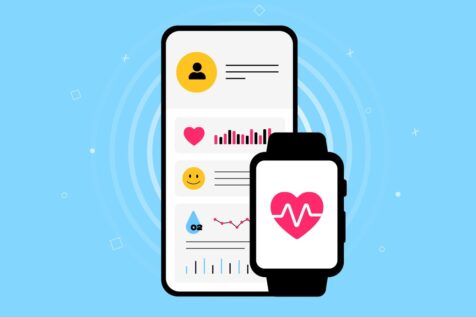Artificial intelligence (AI) has the capability to accelerate the availability, delivery, and quality of healthcare. New technologies open new options in diagnostics, drug discovery, and clinical trials. We have never had as many opportunities to improve people’s health and well-being.
How Can AI Improve Healthcare?
AI can be used as a tool for care, and requires a framework that is technologically ambitious, financially sustainable, and morally serious. I call this approach AIDE−Artificial Intelligence, Devices, and Experts−working in harmony. When paired with my operational framing of CARE−Capture, Augment, Respond, and Evaluate−we can design systems that do not just process data, but care through personalized computation. This is an operational blueprint for deploying AI in complex, resource-constrained health environments.
Deploying AI Where It Can Make a Difference Today
My colleagues and I explored the potential for wearable devices as a means of real-time physiological monitoring for personalized opioid use disorder (OUD) treatment. This wearable technology provides multiple opportunities for providers to monitor patient health and deliver care. By monitoring vital signs and physical activity, wearable devices provide real-time data that can be interpreted by artificial intelligence and transmitted to healthcare practitioners who can make diagnoses and prescribe treatments.
The U.S. opioid crisis continues as a major public health emergency, with over 100,000 drug overdose deaths in 2023, primarily from opioids. Standard treatments, such as medication-assisted treatment (MAT), combine medications with behavioral therapies. However, treatment effectiveness varies among patients, and many do not remain in treatment long-term, with only 57 percent staying after two months of MAT and a 30-year mortality rate of 47 percent.
Wearable devices, like Fitbit, Garmin, and EmbracePlus use AI to collect and analyze data on heart rate, skin temperature, and electrodermal activity, helping to detect craving episodes early and improve intervention timeliness. Although these data show promise for personalized OUD treatment, the varying costs, accuracy, and longevity of these devices mean that cost-effectiveness must be evaluated when integrating them into treatment.
The study uses a Constrained Partially Observable Markov Decision Process (CPOMDP) model to optimize treatment decisions under budget limitations. This model considers patient uncertainty, limited observability, and the need for personalized strategies by incorporating patient states, treatment options, device observations, and cost structures. The CPOMDP framework updates beliefs about a patient’s state using observed signals and past data, capturing evolving uncertainties. To solve the otherwise intractable CPOMDP, we reformulated the objective to combine health rewards (measured in quality-of-life days or number of overdose deaths) and costs, using a tunable parameter to find a feasible policy that maximizes expected health.
Key Findings: The Impact of Wearables in OUD Treatment
Numerical studies evaluated three scenarios: no wearables (only monthly urine tests), wearables with varying accuracy and costs, and an ideal case with perfect information from free wearables. The results indicate that in a homogeneous patient population, wearables provide minimal or even negative value at low budgets due to high opportunity costs. However, when patient responses deviate from population averages, wearables become more beneficial. They especially help identify patients who respond better to specific medications like methadone or buprenorphine, leading to better treatment allocation, particularly with mid-range budgets and medium treatment adherence. High treatment adherence patients show less improvement with wearables, while low treatment adherence patients still see moderate gains. While higher accuracy wearables offer more benefits, the returns diminish at a certain point. Very costly devices do not proportionally outperform cheaper ones, and hypothetical perfect devices show diminishing returns unless budgets are very high. Wearables primarily reduce overdose deaths in medium treatment adherence and medium budget scenarios, suggesting that targeting wearables to mid-risk groups maximizes cost-effectiveness. The CPOMDP framework supports cost-aware decision-making and can guide future clinical trials and funding justifications.
Integrating AI in Healthcare Effectively
In the modern pursuit of continuing to improve health, we find ourselves equipped with tools of formidable potential—devices that observe, artificial intelligence that interprets, and human experts who pass judgment. In isolation, each offers only partial insight. However, when data from devices is augmented by generative algorithms, when analytical systems respond with calculated precision, and when experts apply discernment, the result is a more comprehensive form of personalized medical care.
The power of AI and wearable technology in healthcare is not one-size-fits-all but contextual. While these innovations offer unprecedented opportunities in treating OUD, their effective integration demands a strategic approach.
- Focus the integration of AI-powered wearables on mid-risk patient populations and within mid-range budget environments where they demonstrably yield the greatest impact on treatment effectiveness and reduce overdose deaths.
- Encourage policymakers and healthcare administrators to adopt frameworks like the CPOMDP model to guide resource allocation and funding decisions, ensuring that investments in new technologies provide an impact and are fiscally responsible.
- Design future clinical trials that specifically evaluate the value of AI and wearable technologies in diverse patient populations and varying resource constraints.
While harnessing the potential of AI, it is also necessary to include health care experts every step of the way. AI is a tool to augment clinician or provider decisions, not replace them. The combination of AI, devices, and expert knowledge can build healthcare systems that deliver tangible results to situations like the opioid epidemic.
References
Gan, Kyra and Tang, Yanhan and Scheller-Wolf, Alan Andrew and Tayur, Sridhar R., Optimizing Wearable Devices in Personalized Opioid Use Disorder Treatments Under Budget Constraint (January 8, 2025). http://dx.doi.org/10.2139/ssrn.3389539






